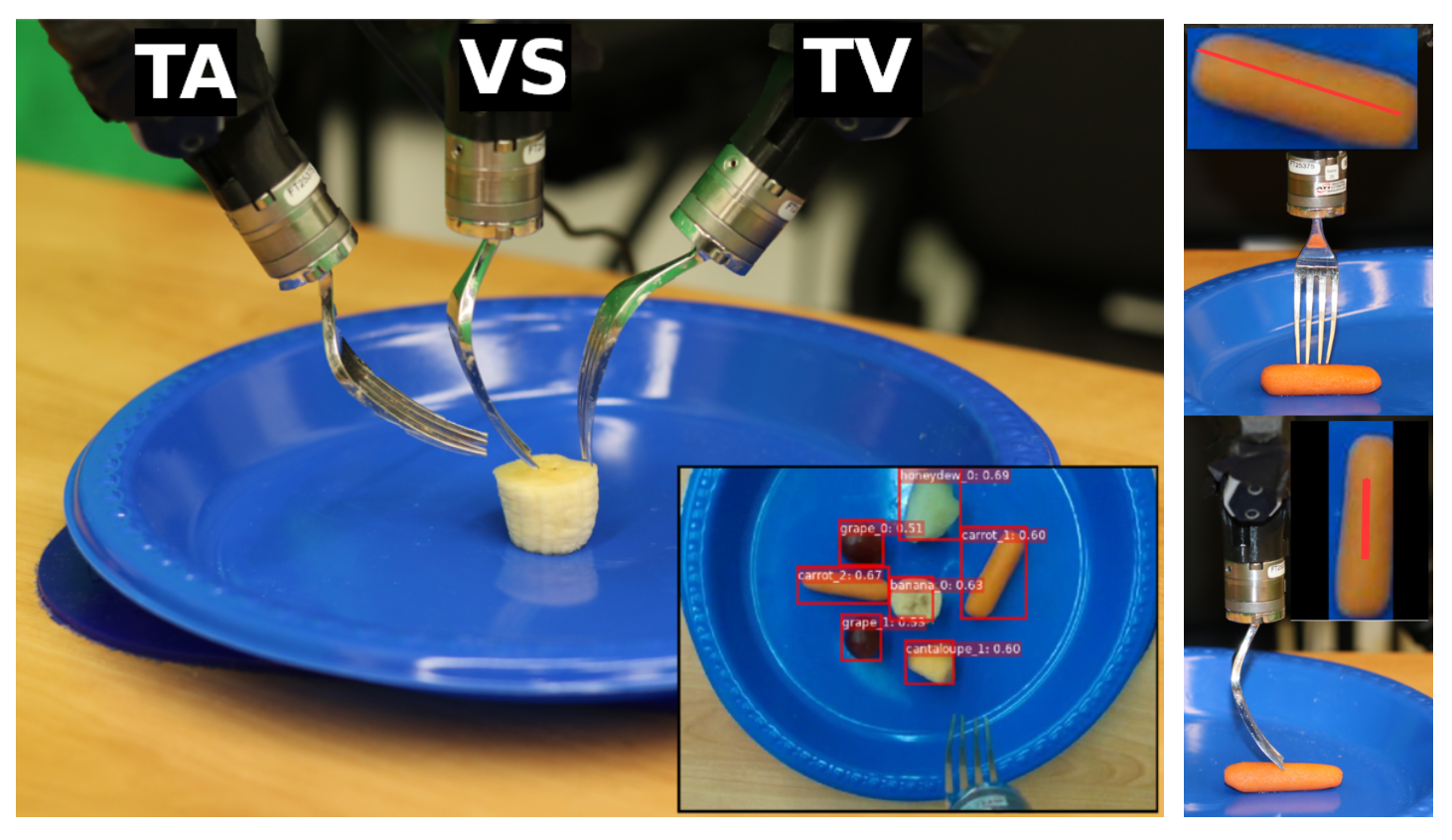Robot-Assisted Feeding: Generalizing Skewering Strategies across Food Items on a Plate
A robot-assisted feeding system must successfully acquire many different food items. A key challenge is the wide variation in the physical properties of food, demanding diverse acquisition strategies that are also capable of adapting to previously unseen items. Our key insight is that items with similar physical properties will exhibit similar success rates across an action space, allowing the robot to generalize its actions to previously unseen items. To better understand which skewering strategy works best for each food item, we collected a dataset of 2450 robot bite acquisition trials for 16 food items with varying properties. Analyzing the dataset provided insights into how the food items' surrounding environment, fork pitch, and fork roll angles affect bite acquisition success. We then developed a bite acquisition framework that takes the image of a full plate as an input, segments it into food items, and then applies our Skewering-Position-Action network (SPANet) to choose a target food item and a corresponding action so that the bite acquisition success rate is maximized. SPANet also uses the surrounding environment features of food items to predict action success rates. We used this framework to perform multiple experiments on uncluttered and cluttered plates. Results indicate that our integrated system can successfully generalize skewering strategies to many previously unseen food items.
